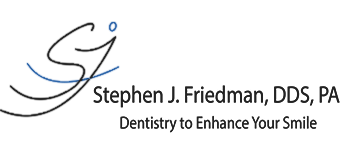Dental Bonding
When mal-shaped, discolored, chipped, or an eroded tooth causes discomfort or prevents a patient from smiling confidently, Dr. Friedman can restore the tooth to form and function using dental bonding when only a small amount of tooth is affected. ” At his practice in Silver Spring, Maryland, Stephen J. Friedman, DDS, PA, regularly uses dental bonding to restore dental imperfections quickly and affordably at one appointment when only small amounts of tooth structure are affected. To learn more about this treatment option for restoring your smile, call the office or click the online booking tool to make an appointment today.
Why would I need dental bonding?
Dental bonding may be recommended when there is a chipped, cracked, decayed or eroded tooth. Malformed or discolored teeth are also treated by bonding when the corrections are not too extensive. Dental bonding can also be used to fill small gaps or spaces between teeth in the “esthetic zone” (the front upper or lower teeth).
Dental bonding per tooth usually takes between 30-60 minutes. The procedure is fast and doesn’t require any temporary restoration or any precautionary period.
In fact, as soon as your appointment is over, you can return to your normal chewing activities Sometimes, a night guard is recommended to protect the new restoration from harmful chewing or grinding habits when the patient is asleep.
How do I prepare for dental bonding?
Dental bonding doesn’t require any special preparation. However, not everyone is a candidate for treatment. To determine if you can benefit from this procedure requires an initial comprehensive exam and very often study models.
Following a comprehensive exam, study models, and “ Smile Design” using a review of the patient’s goals for treatment, Dr. Friedman can then determine if bonding is indicated and then develop a conservative restorative proposal for treatment.
How does dental bonding work?
Prior to dental bonding, a shade is selected that matches the natural tooth enamel. After shade selection, a tool is used to roughen the surface of your tooth and to remove any unsupported enamel structure. Once this is done, etching and bonding are used to apply the bonded resin material.
Sometimes custom made forms of teeth are used to create the shapes and thicknesses of the missing tooth structure to be replaced by the dental bonding. A “curing” light is used to harden the applied resin restorative material. After application, the bonded resin is polished to the luster of the original natural tooth structure.
How long will Bonding last?
Dental bonding is durable and long-lasting and is considered permanent. In areas of high stress and wear, some precautions are recommended such as using a bite guard at night to prevent harmful grinding habits and refraining from nail-biting or using your teeth as “tools”.
If your comprehensive exam and/or smile design indicates the need for limited tooth restoration, , dental bonding may be all that is needed. . Make an appointment at Stephen J. Friedman, DDS, PA, by calling the office or clicking the online booking tool today.


